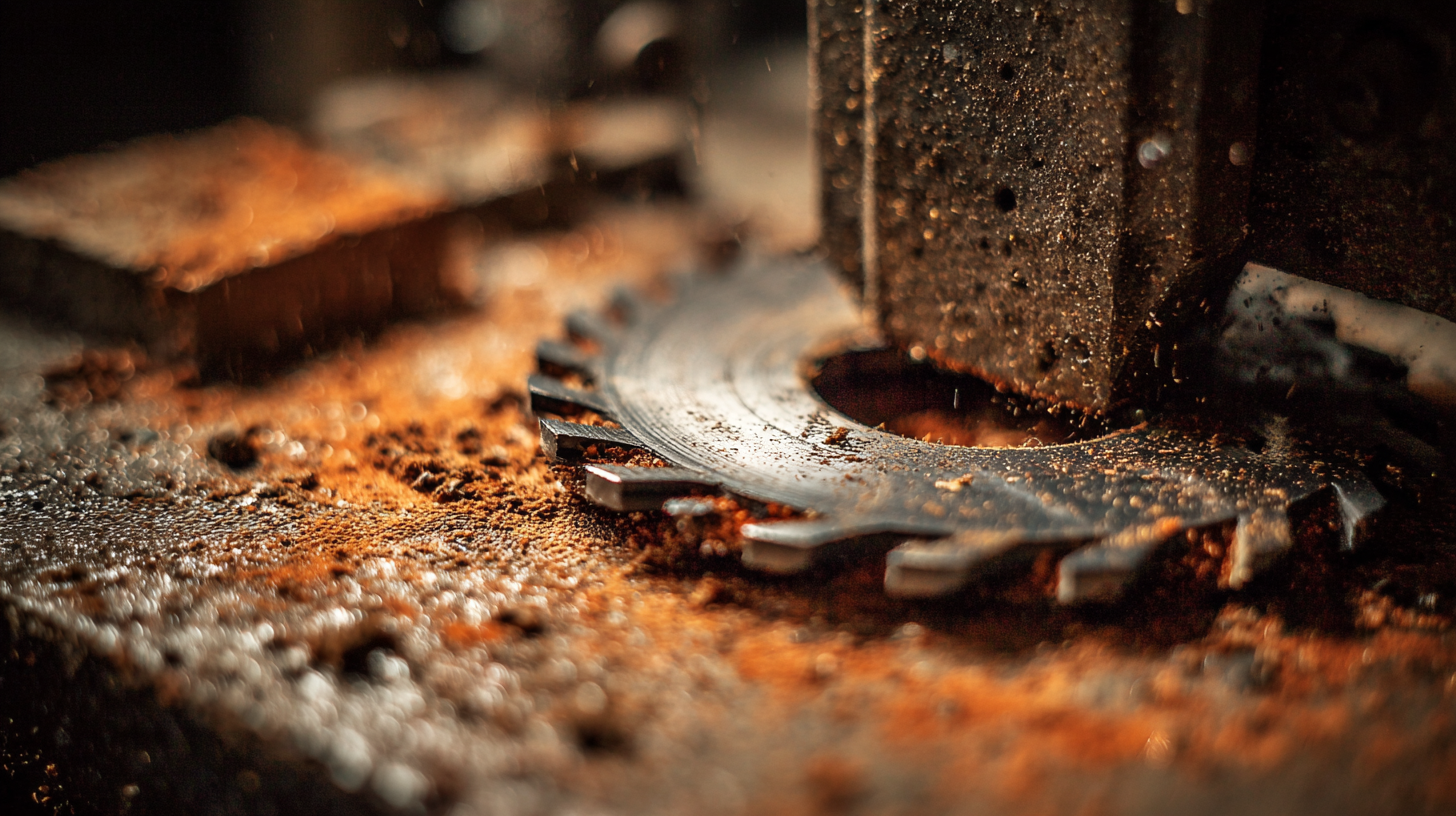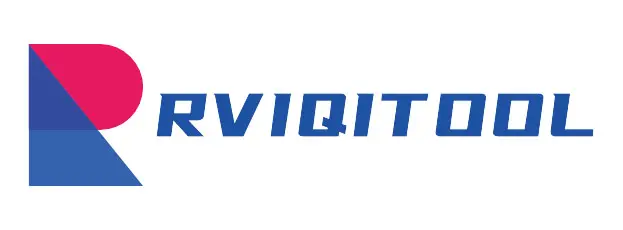When it comes to precision cutting in various materials, a Large Hole Saw is an indispensable tool in the arsenal of both professionals and DIY enthusiasts. However, with an overwhelming array of options flooding the market, selecting a high-quality manufacturer becomes crucial for ensuring efficiency and durability in your projects. This blog will delve into the best alternatives to traditional Large Hole Saws, comparing their features, performance, and overall value. By understanding the various types available and how to evaluate the credibility of manufacturers, readers will gain insights into making informed choices that suit their specific cutting needs. Whether you are tackling plumbing tasks, electrical installations, or crafting projects, this exploration aims to provide you with efficient cutting solutions that can elevate your work to the next level.

The market for large hole saws has seen remarkable growth trajectory, driven by innovations and technological advancements in power tools. As more industries look towards efficient cutting solutions, the rise in demand for large hole saws reflects a broader trend in the global electric tool market. This market is projected to expand from $29.69 billion in 2025 to $40.95 billion by 2032, emphasizing a compound annual growth rate (CAGR) of 4.7%. This growth is indicative of the increasing need for high-performance tools that can deliver precision and efficiency.
In tandem with the growth of electric tools, the diamond tool market is also expected to witness significant expansion, with a projected increase from $102.1 billion in 2025 to $138.66 billion by 2032. The surge in demand for diamond tools is largely attributed to the rising need for precision cutting across various sectors. This has spurred further innovation, as manufacturers strive to meet the evolving demands of the market by developing advanced materials and energy-efficient technologies. As these trends continue to shape the landscape, it is evident that the future of cutting tools, particularly large hole saws, will hinge on sustainability and performance-enhancing features.

When selecting the right hole saw material, performance evaluation is crucial for achieving efficient cutting solutions. Different materials offer varying levels of durability, precision, and cutting speed. For example, bi-metal hole saws provide a perfect blend of flexibility and strength, making them ideal for cutting through a diverse range of materials. On the other hand, carbide-tipped hole saws excel in cutting hard materials, resulting in cleaner holes and extended tool life. Assessing the specific requirements of your projects will help determine the most suitable option for your needs.
**Tips:** Always consider the material you will be cutting. For softer materials like wood, a bi-metal saw is typically sufficient. In contrast, for tougher materials such as metal or composite, investing in a carbide-tipped hole saw can significantly enhance performance. Additionally, ensure that you are using the correct drilling speed and technique to maximize the efficiency and lifespan of your hole saw.
Prior to making your selection, conduct thorough performance evaluations of the available options. Like the recent advancements in testing systems for thermoelectric devices, you should be meticulous in evaluating the quality of cuts and tool endurance. This way, you can confidently choose the hole saw that aligns with both your cutting requirements and budget constraints.
When it comes to cutting large holes in various materials, the traditional large hole saw is often the first tool that comes to mind. However, in recent years, alternative cutting solutions have gained popularity due to their efficiency and versatility. Tools such as spade bits, hole cutters, and oscillating multi-tools offer distinct advantages that make them worthy contenders when considering cutting efficiency. For instance, spade bits are known for their speed when drilling through softer woods, while hole cutters can provide cleaner finishes on harder surfaces like metal or masonry.
A comparative analysis reveals that in terms of operation time and ease of use, alternatives like diamond-tipped core bits can outperform traditional large hole saws, especially in tougher materials. Additionally, the maintenance and cost-effectiveness of some alternatives, such as adjustable hole saws, can make them more appealing for both DIY enthusiasts and professionals. Understanding these differences is crucial for anyone looking to choose the best tool for their specific cutting needs, ultimately leading to more efficient and satisfactory results in any project.
The performance of hole saws is significantly influenced by the quality of manufacturing processes. A recent report by the American National Standards Institute (ANSI) highlights that products manufactured with precision engineering yield up to 30% longer service life compared to their lower-quality counterparts. This means not only extended usability but also reduced downtime, ultimately translating to cost savings for contractors and DIY enthusiasts alike.
Case studies reveal that top-tier manufacturers employing high-grade materials and cutting-edge technologies can provide hole saws that maintain sharpness and structural integrity even under rigorous conditions. For instance, a comparative analysis showed that carbide-tipped hole saws demonstrated a 50% increase in cutting efficiency and a 40% reduction in heat generation. As the industry increasingly adopts advanced manufacturing techniques, consumers are encouraged to invest in those around the higher end of the spectrum to ensure optimum performance and reliability in their cutting tasks.
| Alternative Type | Material | Diameter Size (inches) | Cutting Depth (inches) | Durability Rating (1-10) | Cost ($) |
|---|---|---|---|---|---|
| Bi-Metal Hole Saw | HSS | 1.5 | 2 | 8 | 25 |
| Carbide-Tipped Hole Saw | Carbide | 2 | 2.5 | 9 | 45 |
| Diamond Core Drill | Diamond | 3 | 4 | 10 | 90 |
| High-Speed Steel (HSS) Hole Saw | HSS | 1 | 1.5 | 7 | 20 |
| Titanium Nitride (TiN) Coated Saw | TiN Coated Steel | 2.5 | 3 | 8 | 35 |
As the manufacturing and construction industries evolve, the demand for innovative cutting tools continues to rise. Emerging technologies are reshaping how large hole saws and their alternatives are designed, making them more efficient, versatile, and user-friendly. For instance, advances in materials science are leading to the development of ultra-durable alloys and carbides that enhance the longevity and performance of cutting tools. Additionally, the introduction of smart technology in cutting tools enables real-time monitoring and adjustments, optimizing cutting processes and reducing wastage.

Moreover, the future of cutting tools is intertwined with automation and robotics. As industries shift towards automated solutions, cutting tools must adapt to be seamlessly integrated into robotic systems, leading to more precise and efficient operations. This trend not only meets the high-volume production needs of modern manufacturing but also supports sustainability goals by minimizing resource use and emissions. Ultimately, these emerging technologies promise to deliver cutting solutions that are not only more efficient but also aligned with the demands of a rapidly changing industry landscape.

